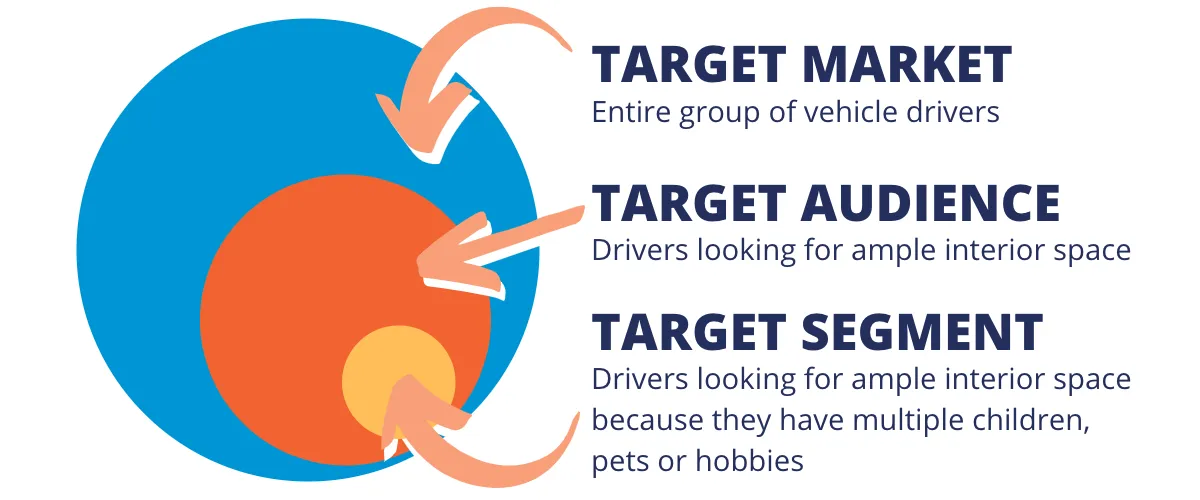
Table of Contents
- 1. Segment Your Audience
- 2. Write Eye-Catching Subject Lines
- 3. Create Mobile-Friendly Designs
- 4. Personalize Your Emails
- 5. Monitor Performance Metrics
- 6. Avoid Spam Filters
- 7. Clean Up Your Email List
- 8. Include a Compelling Call to Action (CTA)
- 9. Optimize Your Email Timing
- 10. Improve Your Email Performance with A/B Tests
Share
Email marketing continues to be one of the most powerful tools in the digital marketing world. In today’s digital environment, it is considered an effective way to reach potential customers and build strong relationships with them. However, simply sending an email is not enough. True success is measured by the open rates and conversion rates of your email campaigns. So how can you increase these rates?
It is extremely important to implement the right strategies to create an email campaign with high open rates and conversion rates. The success of your email sending is not only about reaching the right audience; it is also closely related to the effectiveness of your content. You need to take a few basic steps to attract users to your content, get them to take action, and ultimately convert.
In this article, you will discover 10 practical tips that you can implement to take your email marketing strategies to the next level and increase the performance of your campaigns. From correctly segmenting your email list to writing effective subject lines, each tip will play a key role in improving your conversion rates. Whether you're just starting out or a seasoned marketer, these strategies will add value to campaigns at all levels. Ready, let's get started!
1. Segment Your Audience
One of the key keys to success in email marketing is to deliver the right message to the right person. This is only possible by segmenting your audience correctly. Not all recipients on your email list are the same, and each one may have different needs, interests, and behaviors. At this point, segmentation comes into play, a strategy that makes your campaigns more targeted and effective.
Segmentation means separating your email list with various data such as demographic, behavioral, and geographic. For example, if a customer is only interested in a certain product, sending them a campaign about that product will be much more effective than sending a general email. Similarly, customized messages sent using information such as age, gender, and location of users on an email list provide more interaction and conversion.

One of the most important advantages of segmentation is that it can offer personalized content to the user. Sending messages that appeal to users’ specific preferences and needs, instead of a generic email, can capture their attention and increase email open rates. For example, an e-commerce site can increase conversion rates by offering special discounts to a user based on their previous purchases.
Getting segmentation right not only results in higher open rates, it also improves the user experience. Not everyone has the same needs, and the relevance of the message a user receives directly affects the success of your email marketing. Therefore, it is crucial to place segmentation at the center of your email marketing strategy.
2. Write Eye-Catching Subject Lines
The success of your email marketing often depends on whether or not recipients open your email. When an email is sent, the first thing recipients see is the subject line. This is the first determining factor in whether or not they will open your email. In other words, the attention-grabbing and impressive nature of your subject line directly affects your open rates.
Subject lines are like the “cover page” of your emails. Writing a short, concise, and intriguing subject line is the most effective way to grab the recipient’s attention. People receive thousands of emails in their daily lives, and it’s not easy to grab their attention in this overwhelming flow of information. However, it’s possible to stand out from the crowd with the right subject line. Your subject line both provides information about the content and encourages the recipient to open the email.
For example, a subject line that creates a sense of urgency like “Don’t Miss the Discount Opportunity Now” can motivate the recipient to open it right away. Similarly, personalized messages like “Exclusively for You: 30% Off” attract the user’s attention more and increase conversion rates.
The trick to writing an effective subject line is to provide information about the essence of the message while also arousing curiosity. Short and impressive titles like “Who Sees This: Learn Now” are ideal examples to attract the recipient. In addition, it’s important that your subject line isn’t too long. Emails appear shorter on mobile devices, so it’s often more effective to keep them to 50 characters.
Finally, your subject line shouldn’t be misleading to the recipient. A title that doesn’t match the content of your email can frustrate the user and cause them to lose trust. Writing honest, clear, and engaging subject lines will not only increase your open rates, but will also strengthen your brand credibility.
3. Create Mobile-Friendly Designs
Mobile devices have become one of the most popular platforms for reading emails today. The vast majority of users open their emails on their phones and tablets, making mobile-friendly email marketing critical. For your email campaigns to be successful, your emails need to be viewed perfectly on mobile devices.
Mobile-friendly emails (responsive emails) adapt to screens of all sizes and present content properly. This is especially important for mobile users to be able to read and interact with your email comfortably. Responsive designs improve the user experience by automatically adjusting the content layout and size of emails according to the screen size. For example, very long texts or overly wide images on a small screen can be difficult for the user. Therefore, you should keep your email design simple and clean, ensuring that the content is easily accessible.

Email loading speed is also of great importance for mobile users. Mobile networks can sometimes be slower, so don't forget that your emails should load quickly. Slow-loading emails push users to abandon your email quickly, which negatively affects open rates. Optimizing your email images, reducing file sizes and reducing loading times is the most important step in this regard.
Additionally, the readability and clickability of your email content should also be at the forefront on mobile devices. Long paragraphs on a small screen can tire users and cause them to stop reading the content. Instead, you should use short and concise text to clearly convey your main message. Similarly, make sure that buttons and links are large enough and clickable. On mobile devices, having clickable elements easily accessible makes it easier for users to take action.
Finally, it is very important to test your emails to make sure they display correctly on every mobile device. Checking how they look on different devices and email clients will help you identify potential problems in advance and help you create more successful campaigns.
4. Personalize Your Emails
Personalization in email marketing is key to building deeper, more meaningful relationships with recipients. Standard, one-size-fits-all emails struggle to engage users and often result in low open and conversion rates. However, providing a personalized experience for the recipient is crucial to engaging them and increasing their likelihood of responding to your email campaigns.
The simplest and most effective way to personalize is to address them by name. When people see their own name, they feel more special. For example, starting with “Hi John,” attracts much more attention than a generic “Hello.” This simple technique engages the user more and encourages them to read the content. But personalization isn’t limited to addressing their name alone.
Customizing your email content based on the recipient’s past behavior, interests, and purchasing history can help you achieve more effective results. For example, offering special discounts or product recommendations based on a user’s previous purchases can pique their interest and make it easier for them to make a purchase decision. This type of personalized content tells the user that “I’m sending this just for you” and increases conversion rates.
Advanced personalization techniques, when combined with segmentation, create a powerful strategy. You can use data such as your users’ demographics, behaviors, or interests to deliver more relevant and customized content to them. For example, a fashion brand can offer a customer new season products or campaigns based on their previous purchases. Such customized emails not only attract users more, but also increase their loyalty to the brand.
Ultimately, personalization shouldn’t be limited to just the name. Personalized content combined with segmentation and behavioral data plays a critical role in the success of your email campaigns. When you provide your recipient with truly valuable content, they respond and engage more.
5. Monitor Performance Metrics
Measuring the effectiveness of email marketing not only helps you understand the success of your campaigns, but also helps you develop future strategies. However, it is very important to focus on the right metrics to measure this effectiveness. Without monitoring the performance of your email campaigns, it is impossible to know which strategies are working and which areas need improvement.
One of the most important metrics to consider when evaluating your email marketing performance is the open rate. The open rate shows how many of the emails you send are opened, and it gives you an idea of how remarkable your campaign is. A high open rate indicates that your email subject line is effective and appealing to your target audience. You can use the right segmentation, personalized subject lines, and an effective timing strategy to increase this rate.
Another important metric is the click-through rate (CTR). This shows the percentage of users who click on the links in your email. The click-through rate shows how compelling your email content is and how willing recipients are to take action. If your click-through rate is low, you can revise your email content, include a more effective call to action (CTA), or enhance your content by using better visual elements.

Conversion rate, on the other hand, shows the success of your email campaigns in achieving their ultimate goal, i.e. getting recipients to take an action (buy, sign up, fill out a form, etc.). This rate is a critical metric for measuring how effectively your campaign contributes to real business results. In order to improve your conversion rates, it is important to determine the right target audience, provide personalized content, and use an effective CTA.
Regularly analyzing these metrics will help you continuously improve your campaigns. For example, if you have low open rates, you can review your subject line and make it more eye-catching. If the click-through rate is low, you can get more engagement by redesigning your email content and CTA. Similarly, you can make small changes to your email content and design to increase conversion rates and drive the user to take more action.
Regularly monitoring and analyzing the success of your email marketing will allow you to determine which strategies are effective and make future campaigns more efficient. A data-driven approach will help you achieve your goals by continuously improving.
6. Avoid Spam Filters
The success of your email marketing campaigns is not limited to reaching the right person; the delivery of your message to the intended recipient is also a critical factor. When you send an email, whether it ends up in the recipient’s inbox is often determined by the effect of spam filters. If your email ends up in the spam folder, this can seriously reduce your open rates and hinder the success of your campaign.
Spam filters are a set of algorithms and rules used by email providers. These filters analyze whether the content of the email is suspicious and usually direct suspicious-looking emails to the spam folder. If you use excessive commercial language in your email, include excessive links and visual content, or use certain words, this email may be marked as malicious by the spam filter.
There are a few strategies you should follow to avoid spam filters. First, it is important to keep your email list clean. A list containing invalid addresses or inactive users can cause spam filters to work negatively. Regularly cleaning the list and sending emails only to valid addresses that belong to your target audience increases deliverability.
Another important strategy is to optimize your email content. Spam filters can be triggered when certain words and phrases are used. For example, words like “free,” “guarantee,” “buy now” can be perceived as suspicious by email providers. Therefore, it is important to write your email content using natural and user-friendly language, avoiding overly commercial language.
Additionally, verifying your sender identity and domain verification are effective ways to avoid spam filters. This helps email providers confirm your trustworthiness and increases the likelihood that your emails will be delivered to your inbox. Authentication techniques like Sender Policy Framework (SPF) and DKIM (DomainKeys Identified Mail) verify your email identity and help spam filters consider your emails safe.
Finally, tuning your email frequency is also critical to avoiding spam filters. Emails that are sent too frequently fill up users’ email inboxes and increase the risk of being marked as spam. You should avoid oversending by tailoring your emails to your users’ interest levels.
Avoiding spam filters is a critical step in improving email deliverability. By implementing these strategies, you can ensure that your emails land in users’ inboxes and significantly improve the effectiveness of your campaigns.
7. Clean Up Your Email List
One of the most effective ways to increase the success of your email marketing campaigns is to regularly clean up your email list. Inactive subscribers not only increase your email sending costs, but also negatively impact your deliverability by leading to low open rates and high bounce rates. Building a healthy email list will help ensure that your campaigns are efficient and targeted.
Cleaning up inactive subscribers is the first step to improving the quality of your list. Inactive users are subscribers who have not opened, clicked, or engaged with your emails for a certain period of time. These types of subscribers take up unnecessary space on your list and can trigger your email providers’ spam filters. Therefore, it is important to remove subscribers who have not engaged at all for a certain period of time.
When cleaning up your subscribers, you can use several methods to identify active users. For example, by analyzing users’ open rates, click-through rates, and other engagement metrics, you can focus only on active and engaged subscribers. If there are users who have not engaged for a certain period of time, you can mark them as inactive or purge the list. This will make your emails more targeted and effective.
A healthy email list plays a critical role in increasing conversion rates. By regularly purging your email list, you will only reach interested and engaged users, thus improving your open and click-through rates. A healthy list also increases trust in your brand and reduces the risk of being marked as spam. A high-quality list will help your campaigns drive more conversions and strengthen the success of your overall marketing strategy.
Finally, you can also create re-subscription campaigns. Sending customized emails to encourage users who have been inactive for a period of time to re-engage can help bring those subscribers back to your list. However, it is important to provide valuable and engaging content to users when running such campaigns.
Regularly purging your email list will not only make your emails more efficient, it will also help you create healthier and more effective campaigns. This way, you only deliver valuable content to your target audience and significantly increase conversion rates.
8. Include a Compelling Call to Action (CTA)
Encouraging users to take the desired action is a critical step in the success of your email marketing campaigns. This is where a Call to Action comes into play. An effective CTA is a key component that prompts the recipient to take action and helps your email content achieve its goal. However, a CTA doesn’t just have to be a simple “click” or “buy now”; it must entice the recipient and make them take action.
The CTA in your email content has a big impact on conversion rates. A well-designed CTA clearly indicates what the email recipient needs to do and encourages them to take that action. For example, CTAs that direct users to a product page or highlight a free trial offer will get users to take action faster. It’s important for the CTA to be clear and specific in your content; Instead of general phrases like “Learn more”, it is more effective to use specific and enticing phrases like “Try it for Free Today”.

The design of the CTA also plays an important role. Factors such as color, font, size and position increase the likelihood that users will notice and click on the CTA. Using prominent colors and matching the CTA to the email content makes it visually striking. In addition, the CTA should be large and prominent enough within the email so that the user can immediately understand what they need to do.
Not only is the visual, but also the emotional impact of the CTA important. Sentences aimed at calling recipients to action should appeal to their needs and searches. For example, a “Limited Offer” emphasis can create a sense of urgency in users and increase their motivation to take action. Additionally, your CTA will be more effective if you offer users a personal benefit (for example, “Buy Now, Get 20% Off”).
Ultimately, an effective call to action (CTA) should not only be clear and compelling, but also designed to drive action. By positioning your CTA correctly and using the right language and visual elements to entice the recipient, you can increase your conversion rates.
9. Optimize Your Email Timing
One of the keys to email marketing success is proper timing. Knowing what hours and days you can most effectively communicate with your target audience directly impacts your email open rates and overall campaign effectiveness. Email timing stands out as a critical strategy for increasing the likelihood of users opening your emails and engaging with your content.
A good timing strategy requires understanding the habits and behaviors of your target audience. Observing which times of day users are more online and which days they are more active forms the basis of your timing strategy. For example, a campaign targeting a professional audience who is more active at work in the morning may receive higher open rates than in the afternoon or evening. Similarly, emails targeting a shopping audience may receive more engagement when sent on weekend mornings.
Proper timing to increase email open rates isn’t just limited to day and time. Email traffic can increase during peak hours or holidays when users know when they’ll receive new emails in their email inboxes. Sending emails during less competitive hours can increase your chances of getting noticed.
Another important strategy is to optimize email frequency. Sending email campaigns too often can cause users to skip them or mark them as spam. Instead, sending emails at regular intervals will keep users engaged when you provide them with valuable content. By carefully adjusting your email timing, you won’t fill up your users’ email inboxes, but will instead keep them excited every time.
Finally, it’s also helpful to test your email timing and find the best results by sending at different times with A/B tests. By determining which times generate more engagement, you can send more campaigns during those times.
Optimizing your email timing correctly will help you build a strong bond with your users and capture their attention. This will not only increase your email open rates, but will also allow your email content to receive more engagement and increase your conversion rates.
10. Improve Your Email Performance with A/B Tests
One of the most effective ways to make continuous improvements to your email marketing strategy is to conduct A/B testing. A/B testing allows you to compare two different email versions and understand which element gets more engagement and which strategy is more successful. This test plays a big role in email optimization and allows you to achieve better results continuously.
Optimizing your email campaigns with A/B testing allows you to discover which components perform better by testing your email content, subject lines, images, and CTAs. For example, you can test using different subject lines in an email campaign. By comparing the open rates of both subject lines, you can determine the most effective headline. Similarly, you can test different call to action (CTAs) or visual arrangements used in the email.
The advantages of A/B testing are quite significant. By testing, you can better understand user behavior and learn which elements drive more engagement. This not only increases your email open rates, but also helps you get higher click-through rates and conversions. For example, changing a CTA from “Buy Now” to “Don’t Miss Out” can drive more users to action.
When creating testing strategies, focus on testing just one or two elements. Testing too many variables at once can make it difficult to determine which element is failing. Ideally, testing critical components like the subject line, images, and CTAs in order will help you get more accurate results. Regularly monitoring the results of your A/B tests will allow you to optimize your campaigns based on your users’ preferences.
Conducting A/B testing on your email campaigns can greatly increase your chances of success and help you continually improve your marketing strategies. By monitoring your results, you can understand which changes are increasing conversion rates and integrate these gains into future campaigns.
Conclusion:
By implementing these 10 effective strategies in your email marketing campaigns, you can significantly increase your open rates and conversion rates. Providing valuable content to your target audience, catching the right timing, using an effective CTA, and attracting them with personalized messages directly affects the success of your campaigns. In addition, regularly cleaning your email list and optimizing with A/B tests allows you to continuously improve the results you achieve.
You can make the success of your campaigns sustainable with regular analysis and optimization. Email marketing is a constantly growing field with the right strategies and is a powerful tool to reach your target audience. By implementing these strategies, you will not only increase your email open and click rates, but also build strong and long-term relationships with your brand.
“Writing is seeing the future.” Paul Valéry


